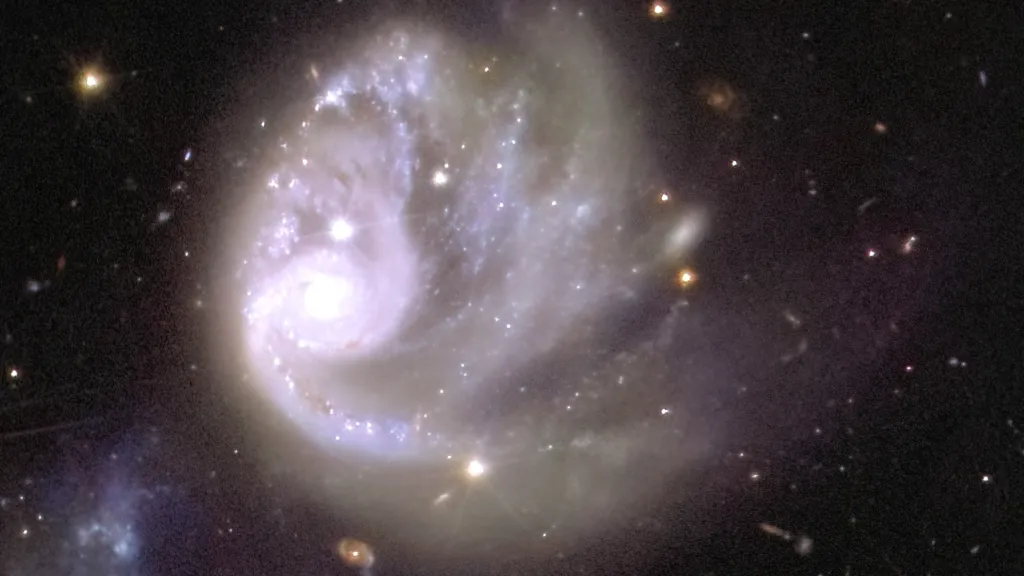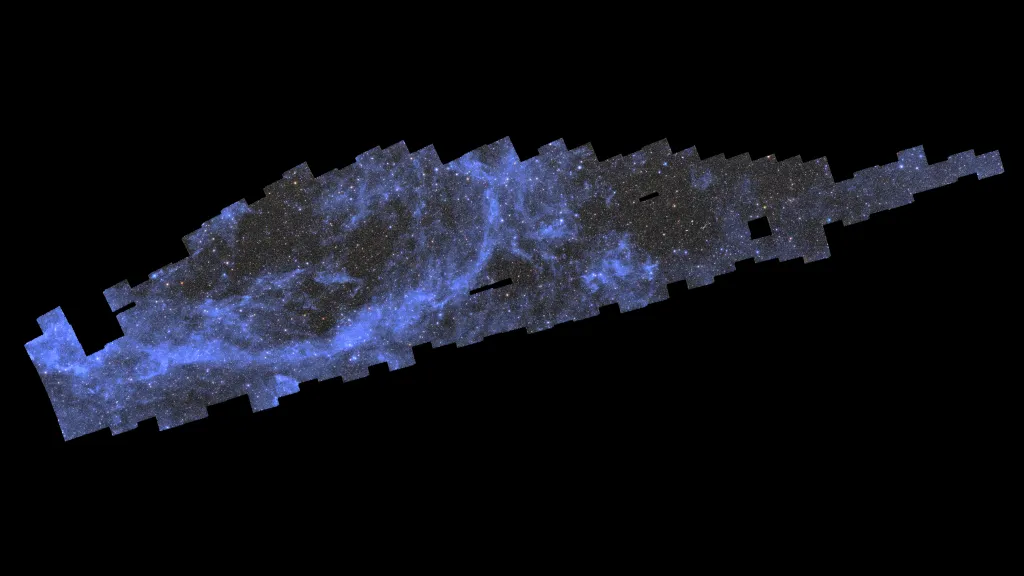| Summary |
|
On October 15, the European Space Agency (ESA) and NASA presented the first large-scale mosaic image captured by the Euclid space telescope during the International Astronautical Congress in Milan. The mosaic represents just 1% of the telescope’s planned sky survey, yet it already reveals a breathtaking view of the universe.
Between March 25 and April 8, Euclid conducted 260 observations, covering 132 square degrees of the southern sky (an area 500 times larger than the full moon). The result is a 208-gigapixel image containing about 100 million stars and galaxies. ESA has made the mosaic interactive, allowing viewers to zoom in and explore detailed cosmic structures.

One zoomed-in section, magnified 150 times, reveals two galaxies interacting 470 million light-years away. The image also highlights faint Galactic Cirrus (clouds of dust and gas), showing the telescope’s ability to capture subtle features of the cosmos through its highly sensitive visible light camera.
Euclid was launched on July 1, 2023, as a collaboration between ESA and NASA. The six-year mission aims to study dark matter and dark energy, the forces driving the accelerating expansion of the universe. Using its Visible Imager (VIS) and Near-Infrared Spectrometer (NISP), Euclid will measure the shapes, distances, and motions of billions of galaxies up to 10 billion light-years away, creating the largest 3D map of the cosmos ever attempted.
The first mosaic marks only the beginning of Euclid’s work, but it already demonstrates the telescope’s promise in reshaping our understanding of the universe’s hidden structure.

